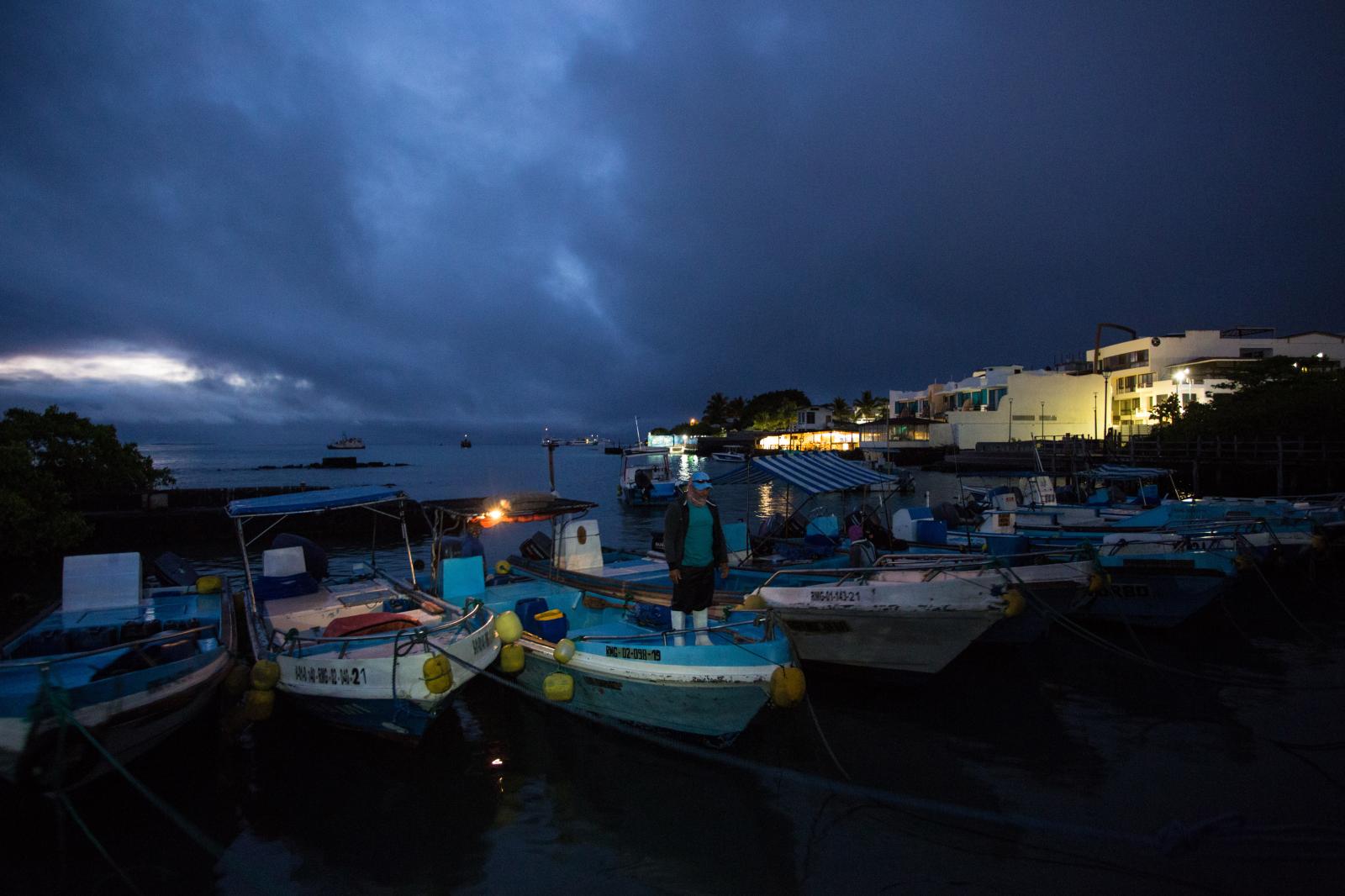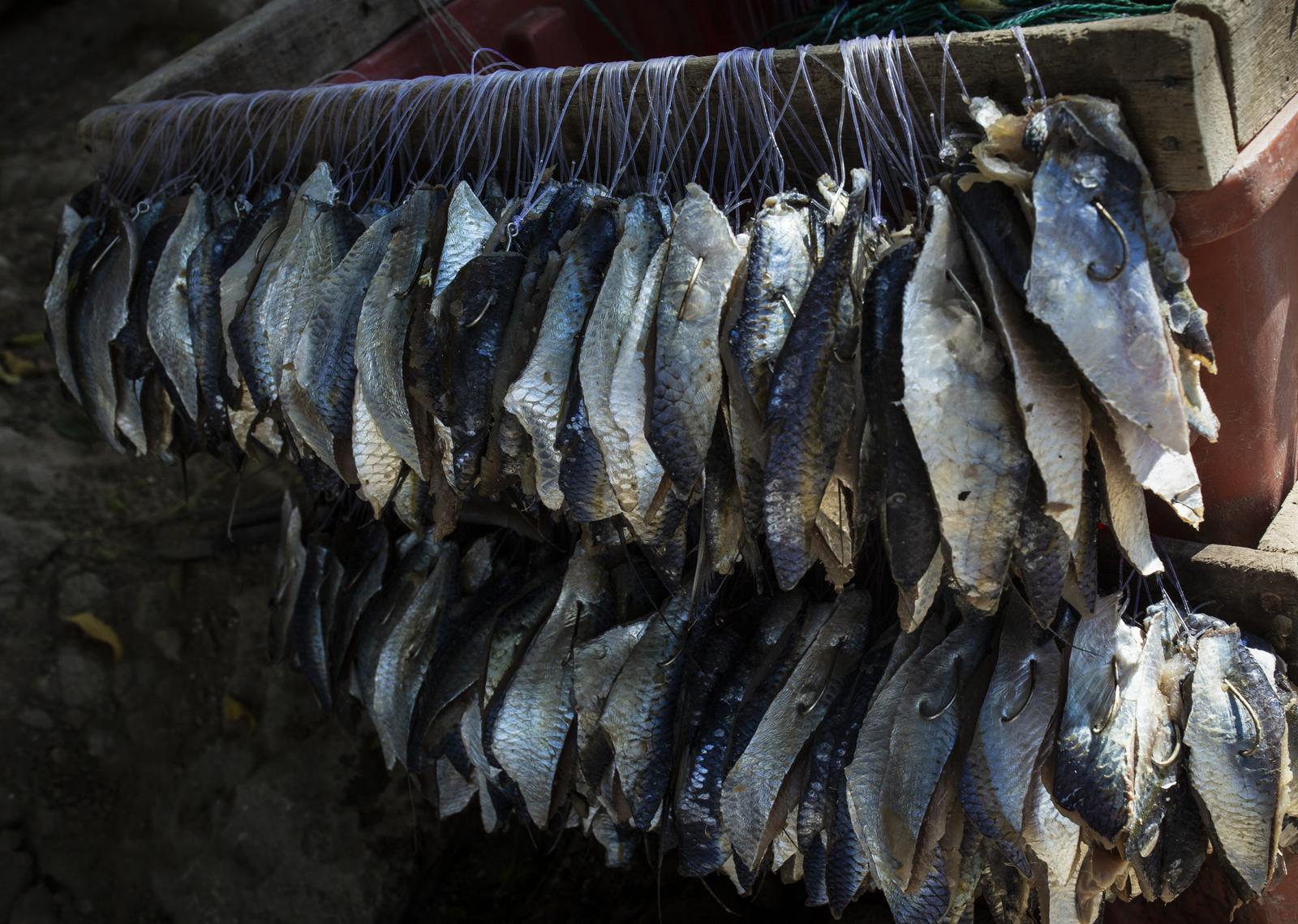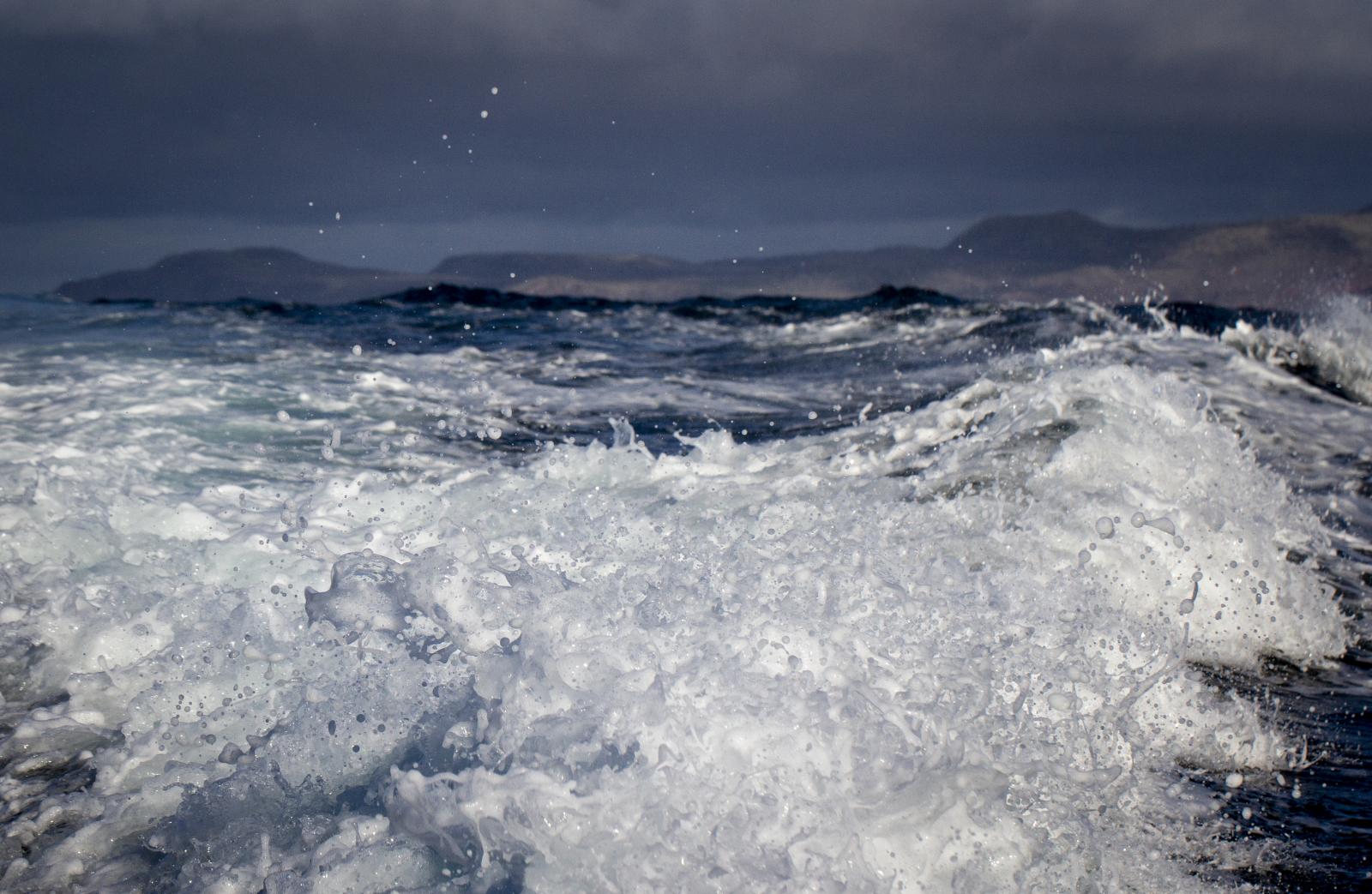Public Story
The forbidden fishing
From the age of ten, Jorge* liked to accompany his father to fish in the waters of the Galapagos, where they moved when he was younger. Half a century ago, his father taught him to fish with a tie or hand line as it is also called, a fishing gear made of a vertical line with several hooks and a weight at the end. Today Jorge, brown skin tanned by the sun, dark hair interspersed with gray streaks, and lively dark eyes is one of the 458 fishermen in the famous archipelago. He remembers wistfully that they used to go out for about six hours and come back with 200 or 300 pounds of catch. But not anymore. Now there is no way for Jorge to catch that amount in that time using just a tie; he calculates that he would need at least a week on the high seas. The only way to do it, he says in his thick voice and coastal accent is by using a long line.
the big problem with longlining: is it is a non-selective gear. This means that it also captures species with no commercial value but that often have a high conservation value: turtles, dolphins, manta rays, certain species of sharks, birds, among others. This residual fishing is known as "incidental". In places like Hawaii, the Pacific, and the entire West Coast of the United States, longlining is prohibited precisely because of its high incidence rate.
Story for spoligth GK.city - The forbidden fishing gear that everyone uses- by Domenica Montaño
Found Journalism Grant Ilegal Fishing in Galápagos by Internews and Gk
Texto por Domenica Montaño
Desde los diez años, a Jorge* le gustaba acompañar a su papá a pescar en las aguas de Galápagos, donde se mudaron cuando era más pequeño. Hace medio siglo, su padre le enseñó a pescar con un empate, o línea de mano como también le dicen, un arte de pesca hecho de una piola vertical con varios anzuelos y un peso al final. Hoy Jorge, piel morena bronceada por el sol, cabello oscuro entremezcla con vetas grises y vivaces ojos oscuros, es uno de los 458 pescadores que hay en el célebre archipiélago. Recuerda, con nostalgia, que solían salir unas seis horas y regresaban con 200 o 300 libras de pesca. Pero ya no. Ahora no hay manera de que Jorge pesque esa cantidad en ese tiempo usando solo un empate; calcula que necesitaría, por lo menos, una semana en alta mar. La única forma de hacerlo, dice con su voz gruesa y acento costeño, es usando un palangre. el gran problema del palangre: es un arte no selectivo.
Esto quiere decir que también captura especies sin valor comercial pero que, muchas veces, tienen un alto valor conservacional: tortugas, delfines, manta rayas, ciertas especies de tiburones, aves, entre otros. A esta pesca residual, se la conoce como “incidental”. En lugares como Hawái, en el Pacífico, y toda la Costa Oeste de Estados Unidos, el palangre está prohibido precisamente por su alta incidentalidad.
Historia para GK.city -El arte de pesca prohibido que todos usan - de Domenica Montaño
Con el apoyo de la beca de periodismo de pesca ilegal en Galápagos, de GK e Internews
Desde los diez años, a Jorge* le gustaba acompañar a su papá a pescar en las aguas de Galápagos, donde se mudaron cuando era más pequeño. Hace medio siglo, su padre le enseñó a pescar con un empate, o línea de mano como también le dicen, un arte de pesca hecho de una piola vertical con varios anzuelos y un peso al final. Hoy Jorge, piel morena bronceada por el sol, cabello oscuro entremezcla con vetas grises y vivaces ojos oscuros, es uno de los 458 pescadores que hay en el célebre archipiélago. Recuerda, con nostalgia, que solían salir unas seis horas y regresaban con 200 o 300 libras de pesca. Pero ya no. Ahora no hay manera de que Jorge pesque esa cantidad en ese tiempo usando solo un empate; calcula que necesitaría, por lo menos, una semana en alta mar. La única forma de hacerlo, dice con su voz gruesa y acento costeño, es usando un palangre. el gran problema del palangre: es un arte no selectivo.
Esto quiere decir que también captura especies sin valor comercial pero que, muchas veces, tienen un alto valor conservacional: tortugas, delfines, manta rayas, ciertas especies de tiburones, aves, entre otros. A esta pesca residual, se la conoce como “incidental”. En lugares como Hawái, en el Pacífico, y toda la Costa Oeste de Estados Unidos, el palangre está prohibido precisamente por su alta incidentalidad.
Historia para GK.city -El arte de pesca prohibido que todos usan - de Domenica Montaño
Con el apoyo de la beca de periodismo de pesca ilegal en Galápagos, de GK e Internews














